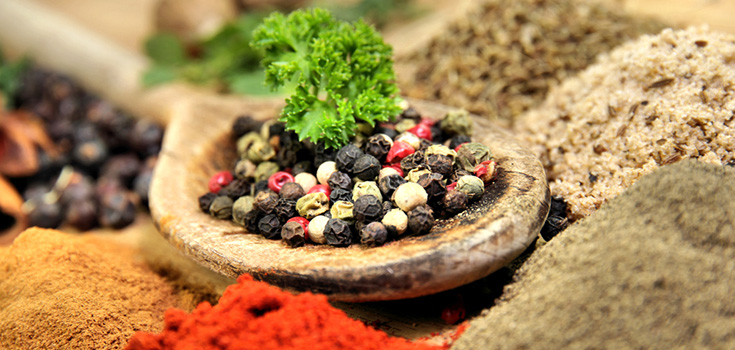Natural Cancer-Fighting Spice Reduces Tumors in 81% of Cases in Study

Used in the ancient Chinese and Indian systems of medicine, curcumin is a naturally powerful anticancer compound within the spice
Researchers experimenting with curcumin in the treatment of a fatal brain cancer known as glioblastoma (GBMs) published their groundbreaking findings in the Journal of Nutritional Biochemistry.
The research assessed curcumin’s ability to induce cell death and inhibit tumor growth in both laboratory cell lines and animal models.
In the lab, curcumin significantly reduced the growth and spread of GBM cells across various cell lines, regardless of their genetic mutations. A whopping 81.8% of the curcumin-treated rats showed decreased tumor size compared to none in the control group.
Notably, curcumin targeted cancer cells without harming normal brain cells, indicating its selective action against tumor cells.
The compound was found to disrupt key survival pathways in the cancer cells, namely PI3K/Akt and NFkappaB, and led to reduced levels of bcl-xl, a protein that prevents cell death. This initiated mitochondrial dysfunction, setting off a chain of events that led to cell death.
The study observed that curcumin caused GBM cells to stop dividing and eventually die, with signs of cell cycle arrest and the formation of apoptotic bodies.
Interestingly, the activation of caspase-3, a critical enzyme in the process of apoptosis, was noted in cells with normal p53—a tumor suppressor gene—but not in those with a mutated version of the gene.
Curcumin also enhanced the effectiveness of traditional chemotherapy drugs like cisplatin and doxorubicin when used in combination, leading to increased GBM cell death.
More Brain Cancer Research
Other researchers focusing on curcumin’s impact on rat C6 glioma cells noticed notable changes when these cells were treated with curcumin.
Gliomas are tumors that form in glial cells in the brain and spinal cord.
The researchers found that curcumin treatment led to a reduction in the side population (SP) of the C6 glioma cells. The side population is a subset of cells thought to have stem cell-like characteristics and is often associated with the ability to initiate tumors and resist therapy.
By directly adding curcumin to the C6 cells, a decrease in SP was also noted. This suggests that curcumin could potentially be used as a dietary agent aimed at targeting cancer stem cells within gliomas.
Breast Cancer
Focusing on breast cancer cells, this study investigated curcumin’s effect on integrin alpha(6)beta(4), a protein that helps cancer cells move and invade other tissues, which is crucial for cancer progression.
The study found that curcumin significantly reduces the movement and ability of breast cancer cells to invade other tissues, which are critical steps in cancer progression. This inhibitory effect of curcumin was observed in specific breast cancer cell lines known to rely on alpha(6)beta(4) for migration and invasion. Importantly, curcumin achieved this without causing cell death, indicating a targeted approach to impeding cancer cell activity.
Moreover, when curcumin was used in combination with other inhibitors that disrupt alpha(6)beta(4) signaling, there was a combined effect that further blocked the cancer cells’ ability to move and invade.
When curcumin was used alongside other drugs that target alpha(6)beta(4) signaling, there was an additional reduction in cancer cell movement and invasion, suggesting that a combination therapy could be more effective.
In summary, the findings indicate that curcumin hinders the motility and invasion of breast cancer cells by directly targeting the alpha(6)beta(4) integrin function.
While an amazing anticancer substance, studies have also pinpointed curcumin as a tool for more than 572 other factors that fuel disease. Some of these include, in order of study count: oxidative stress, inflammation, DNA damage, lipid peroxidation, chemically-induced liver disease, Alzheimer’s disease, and liver fibrosis. Curcumin has even been found to influence more than 700 genes, which could explain its link to DNA repair.
Each 100 grams of

How, then, does one take it? Food as spice?
I too would like to know how it is recommended to be taken. do you drink it it a tea form … how should we get it into the body system.
I have found ways to use turmeric that are pleasant. I usually make a lot of chicken soup in the winter so in goes turmeric. Also added to chicken or beef bone stock ( or broth) and seasoned with garlic salt onion powder or any spice you like to add to soups and broths. Makes a nice hot drink.
I used half coconut milk and half almond but I suppose you could use regular whole milk as well. This was a very tasty way to get turmeric into your diet. Also I have bought capsules and made my own turmeric capsules to take with me on trips at work or in a hurry when I can’t make tea broth or soup.
My husband takes only the capsules. A 31/2 centimeter tumor was found in his gall bladder. I started him taking turmeric, 2 capsules 3 times a day for six weeks. When he had his gallbladder surgery the pathologist found no evidence of a tumor or growth at all! We should have had the sonogram done again before surgery! We had not expected to see it completely gone but hoped it would have shrunk. duh! he did nothing different in diet only the turmeric capsules. Now I am sucking all information I can on this herb spice food medicine called turmeric and we still use it daily.